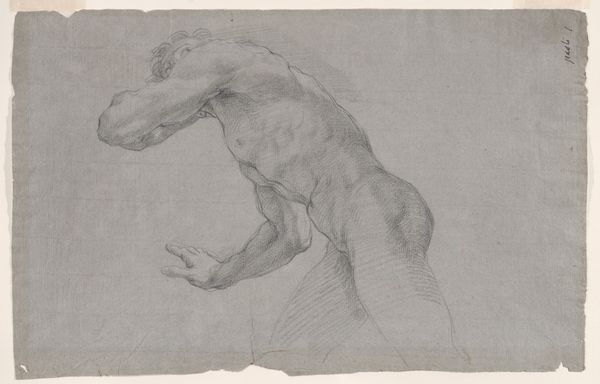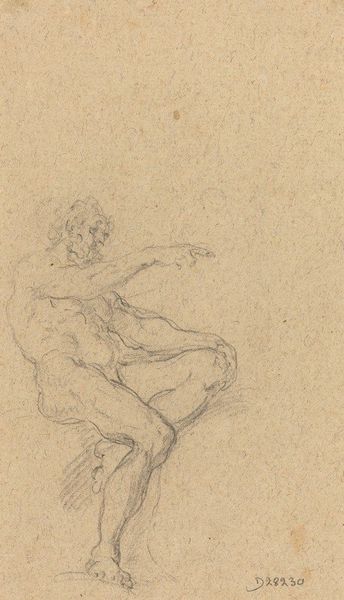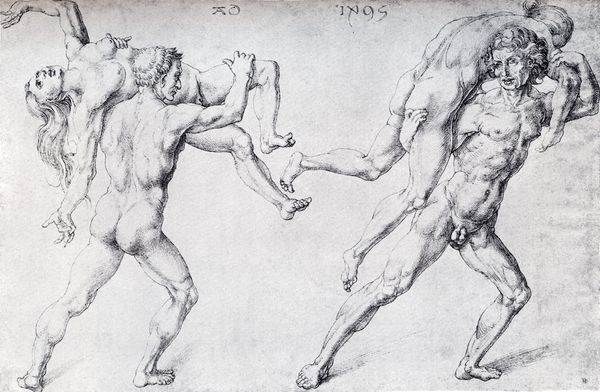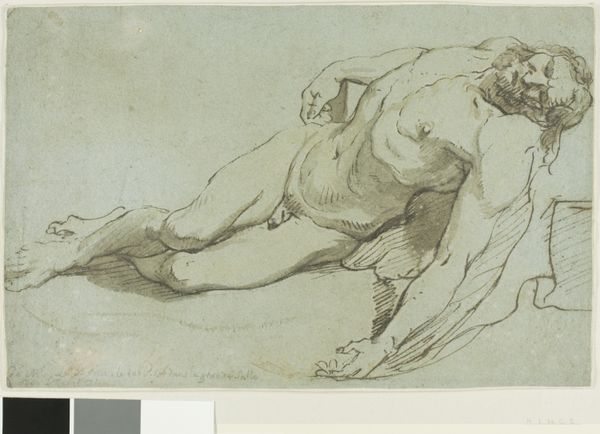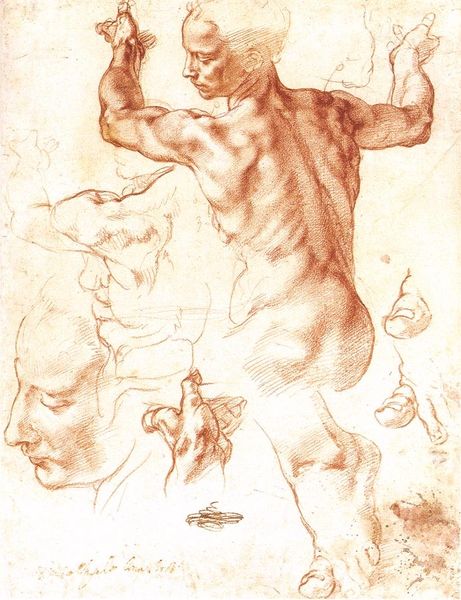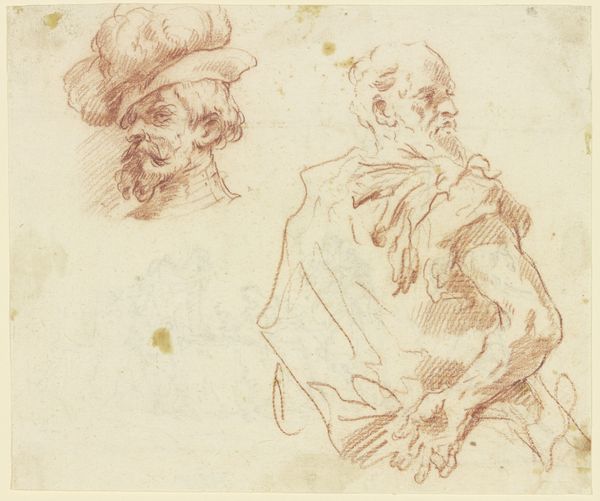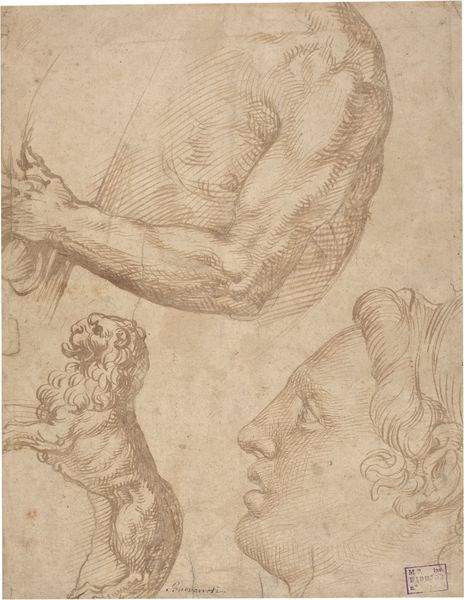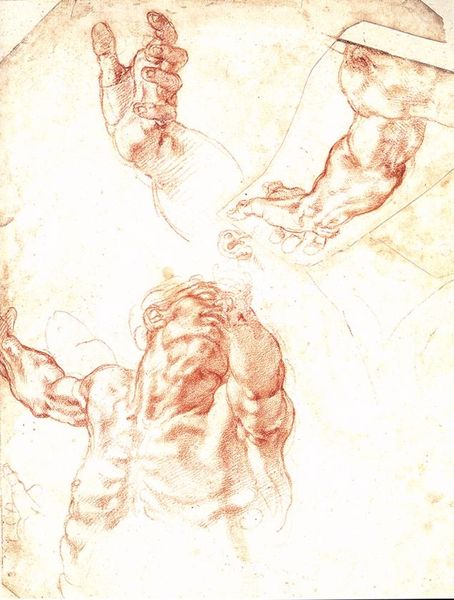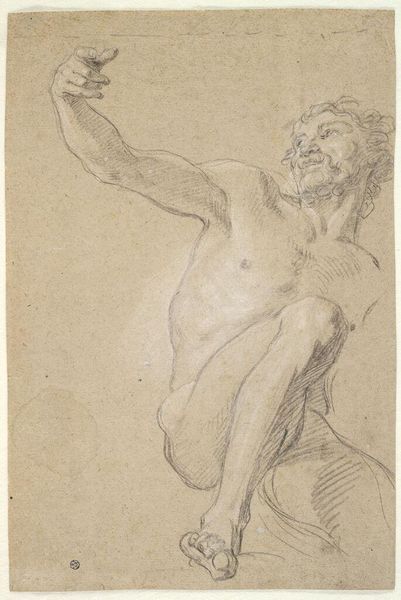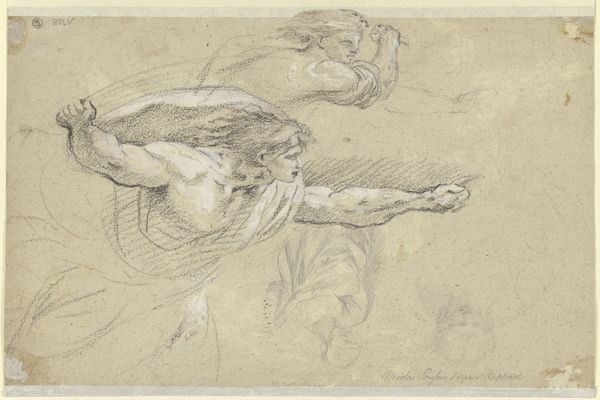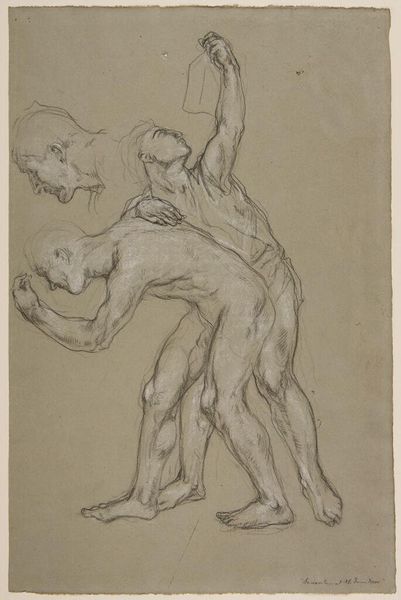
drawing, pencil
#
portrait
#
drawing
#
pencil sketch
#
figuration
#
pencil
#
line
#
sketchbook drawing
#
academic-art
Dimensions: height 147 mm, width 277 mm
Copyright: Rijks Museum: Open Domain
This study of a man’s arm and back was made by Eugène Delacroix, likely in the first half of the 19th century. He used graphite, a relatively new material at the time, on paper. The softness of graphite allowed Delacroix to quickly capture the nuances of light and shadow on the model's body. This wouldn't have been possible with older drawing materials like silverpoint, which demanded a more painstaking approach. You can see how he used the graphite to build up the forms with rapid, layered strokes. Look closely, and you can almost feel the texture of the paper coming through. As a study, this drawing was a means to an end; Delacroix was no doubt preparing for a larger painting. Yet, the immediacy and directness of the graphite, along with the artist’s virtuoso handling of it, gives the drawing a powerful presence all its own. It reminds us that even the most traditional art materials have a history, and their use always carries a specific set of possibilities.
Comments
No comments
Be the first to comment and join the conversation on the ultimate creative platform.

